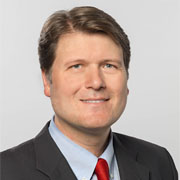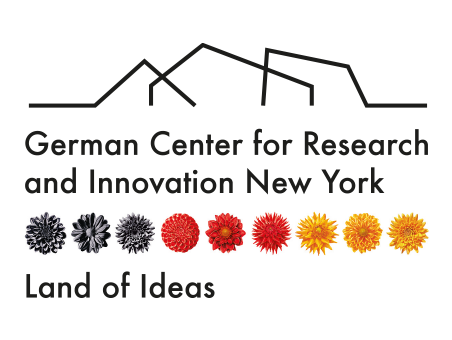Interview with Dr. Constantinos Antoniou

Born in Greece, educated at MIT and now working at the Technical University of Munich, Dr. Constantinos Antoniou is an expert in transportation system modeling. In this interview, he discusses with us his research, the limits of human mobility and why building more roads is the worst transportation solution.
If you like what you read here, don’t miss our July 9 event in San Francisco hosted with the German American Chamber of Commerce West, Automated Transportation – Changing Cities, Society and Business, where Dr. Antoniou will be a featured speaker.
DWIH: Hi, Dr. Antoniou! Thanks for taking the time to chat with us. Let’s hop right into it. Your research focuses on transportation system-modeling and simulation. Can you break down the main points of your research for us?
Antoniou: Gladly and thanks for the kind invitation to discuss this very interesting topic!
Mobility is becoming an increasingly complex field. In the past, there were primarily cars and public transport (bus, tram, metro). Nowadays, we have Uber/Lyft, shared bikes and cars, dynamic vanpooling services, shared scooters etc. And what is more disruptive is that these appear (and sometimes disappear) overnight. Therefore, we need to have a way to describe the interactions of all these modes with the preferences of the travelers in order to be able to move towards a human-centric mobility landscape.
In order to achieve this safely and efficiently, we create a parallel, virtual transportation system in our computer systems. In order to do this, we need to develop models that capture it. While there are several decades of well-established research in these fields, the current advances in data collection, communications and processing power constantly allow us to develop radically richer models.
For example, nowadays it is possible to infer information about the travel patterns of travelers by collecting and analyzing the locations of their geotagged tweets or facebook/foursquare checkins, or we can evaluate the route switching behavior of different types of people based on GPS traces from their vehicles or by sensing the WiFi or Bluetooth signals of their smartphones.
Naturally, there are many different types of models, and one of the major decisions that have to be made is choosing the right model for the right job. There are models that look at the behavior of travelers and the transportation system at an aggregate level, or at a very detailed, microscopic level. On the other hand, there are emerging models that are based on machine learning and big data analytics that provide new insights. In my research I try to develop and assess these in parallel in order to see how human-centric mobility can become a reality!

In my research I try to develop and assess these in parallel in order to see how human-centric mobility can become a reality.Dr. Constantinos Antoniou
DWIH: In most people’s minds, transportation solutions seem simple and can essentially be reduced to: build more and bigger roads. Is this actually a solution? Can you give an example of a particularly innovative or even unusual transportation solution you have encountered?
Antoniou: This is actually a very interesting question, as this (“build more and bigger roads”) is actually –perhaps counterintuitively– probably the worst possible response to transportation problems. After a possible, short-term, temporary relief, what would undoubtedly happen in such a situation is that more traffic would be generated (due to the phenomena of so-called “induced” or “latent” demand) and after a few months the situation would be roughly the same, in terms of travel time, but with the added drawback of more vehicles on the road, resulting in more emissions, more noise and so on.
The idea is that we humans appear to have a fixed “travel budget” (about an hour per day), and this has been pretty much stable across history. In ancient times, people could only walk to reach their destinations. When they tamed horses, and thus became faster, they did not continue visiting the same hunting spots, but instead they started going farther away. When later we developed cars, instead of saving time for other activities, by visiting the same destinations faster, we instead started traveling even farther away, reaching more remote destinations, within this daily travel budget.
Coming back to your question: actually, not only is building roads not a solution, but instead, restricting access and closing roads might be a solution (either physically or by means of e.g. congestion charging, which is also a timely issue in New York City). Naturally, this assumes that suitable other mobility options are available–most centrally a reliable and dense public transport network.
DWIH: How can we ensure the future of transportation is ecologically and economically sustainable?
This is a tough one! We have to create incentives for the providers of the transportation solutions to lean towards the ecologically and economically sustainable ones. However, there are also other considerations, such as equity, which typically contradicts the economically sustainable part.
I would say that we need regulation and oversight. However, we should not leave all the responsibility to the policy makers. Instead, we, as research community, need to conduct serious, independent research on these topics, which would lead to evidence-based policy recommendations. Only if we provide policy makers with concrete, and easy-to-understand policy instruments, can we expect them to come up with the right frameworks.
DWIH: The speed at which technology is progressing can leave people confused and intimidated. What would you say to those feeling this way, specifically about the future of mobility?
Antoniou: This is an important concern, and one that we, as transportation engineers, really need to worry about. Technology is moving at an unprecedented pace, and this is great. However, we should not adopt “technology for technology’s sake,” but instead take advantage of these amazing developments to improve existing systems and devise new systems in a human-centric way.
One of the key aspects of my research is identifying and quantifying the factors affecting the adoption, demand and satisfaction of travelers with emerging and future transportation modes, such as shared vehicle systems, autonomous vehicles and urban air mobility (the so-called “flying taxis”). If these systems are not built with the passenger at the center, they will fail, or -at the very least- fail to provide their maximum potential.
So, to answer your question, I would say that this is a key consideration, and please keep reminding us, so that we do not forget!
Having said that, whoever can, hold on to your smartphones, as they will become even more central to moving around!

If these systems are not built with the passenger at the center, they will fail or -at the very least- fail to provide their maximum potential.Dr. Constantinos Antoniou
DWIH: You are an international scholar born in Greece, educated in the US, working in Germany. How important is international collaboration in solving social problems?
Antoniou: Actually, perhaps ironically, advances in transportation have led to a large extent to the globalization that has enabled such trajectories. And in fact, I am not only working in Germany, but across Europe, in the US, China, India, Singapore, and many other places. The ability to combine multiple international trips per week is also an evidence of the great advances of transportation.
Like interdisciplinarity, internationalization offers amazing opportunities and synergies. Researchers from different countries and continents have very different viewpoints, access to unique data-sets, and needs and problematics that can lead to new ideas. For example, there are data-driven traffic simulation models that I developed with my students, which cannot show their full potential, unless you apply them using data from Indian streets, where there is weak-lane discipline and a vast number of different vehicle types interacting on the streets. Similarly, when we collect survey data from travelers in Cairo, Egypt, and Mexico City, Mexico, and compare their behavior to that of travelers in Munich, Madrid and Athens, we extract rich inter-cultural behavioral patterns, which might otherwise remain unnoticed.
DWIH: Thanks so much for your great insights! Looking forward to hearing more on July 9.
